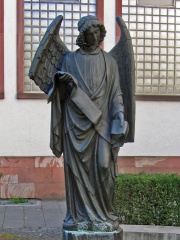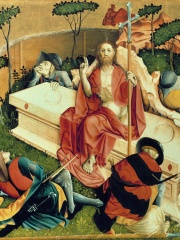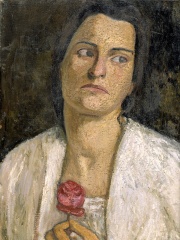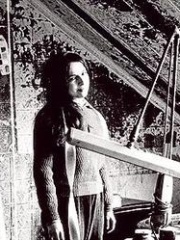
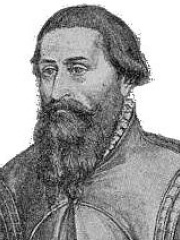
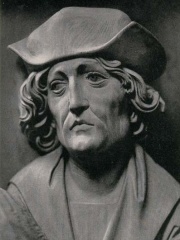
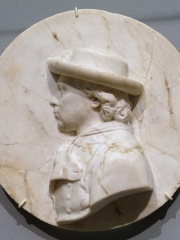
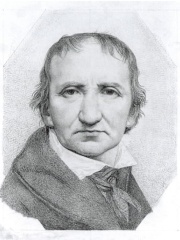
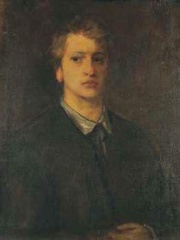
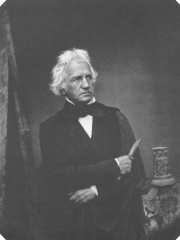

The Most Famous
SCULPTORS from Germany
This page contains a list of the greatest German Sculptors. The pantheon dataset contains 258 Sculptors, 19 of which were born in Germany. This makes Germany the birth place of the 4th most number of Sculptors behind Italy, and United States.
Top 10
The following people are considered by Pantheon to be the top 10 most legendary German Sculptors of all time. This list of famous German Sculptors is sorted by HPI (Historical Popularity Index), a metric that aggregates information on a biography's online popularity. Visit the rankings page to view the entire list of German Sculptors.

1. Eva Hesse (1936 - 1970)
With an HPI of 68.11, Eva Hesse is the most famous German Sculptor. Her biography has been translated into 32 different languages on wikipedia.
Eva Hesse (January 11, 1936 – May 29, 1970) was a German-born American sculptor known for her pioneering work in materials such as latex, fiberglass, and plastics. She is one of the artists who ushered in the postminimal art movement in the 1960s.

2. Veit Stoss (1450 - 1533)
With an HPI of 67.49, Veit Stoss is the 2nd most famous German Sculptor. His biography has been translated into 31 different languages.
Veit Stoss (German: [faɪt ˈʃtoːs], also spelled Stoß and Stuoss; Polish: Wit Stwosz; Latin: Vitus Stoss; before 1450 – about 20 September 1533) was a leading German sculptor, mostly working with wood, whose career covered the transition between the late Gothic and the Northern Renaissance. His style emphasized pathos and emotion, helped by his virtuoso carving of billowing drapery; it has been called "late Gothic Baroque". He had a large workshop, and in addition to his own works there are a number by pupils. He is best known for the altarpiece in St. Mary's Basilica in Kraków, Poland.

3. Tilman Riemenschneider (1460 - 1531)
With an HPI of 66.73, Tilman Riemenschneider is the 3rd most famous German Sculptor. His biography has been translated into 36 different languages.
Tilman Riemenschneider (c. 1460 – 7 July 1531) was a German woodcarver and sculptor active in Würzburg from 1483. A master in limewood and stone, he was one of the most prolific and versatile sculptors of the transition period between the Late Gothic, to which he essentially belonged, and Northern Renaissance art. He was also a local politician in the council of Würzburg. Most of his subjects are religious, including several very large and spectacular carved wood altarpieces, as well as tombs in stone, and statues. He was largely forgotten soon after his death, but rediscovered by art historians in the 19th century.

4. Franz Xaver Messerschmidt (1736 - 1783)
With an HPI of 64.77, Franz Xaver Messerschmidt is the 4th most famous German Sculptor. His biography has been translated into 21 different languages.
Franz Xaver Messerschmidt (February 6, 1736 – August 19, 1783) was a German-Austrian sculptor most famous for his "character heads", a collection of busts with faces contorted in extreme facial expressions.
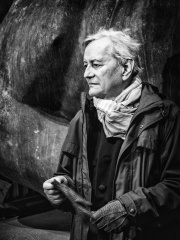
5. Igor Mitoraj (1944 - 2014)
With an HPI of 63.39, Igor Mitoraj is the 5th most famous German Sculptor. His biography has been translated into 22 different languages.
Igor Mitoraj (Polish pronunciation: [ˈiɡɔr miˈtɔraj]; 26 March 1944 – 6 October 2014), born Jerzy Makina, was a Polish artist and monumental sculptor. Known for his fragmented sculptures of the human body often created as large-scale installations in public places. His work is internationally exhibited, mainly in Europe.

6. Johann Gottfried Schadow (1764 - 1850)
With an HPI of 62.70, Johann Gottfried Schadow is the 6th most famous German Sculptor. His biography has been translated into 31 different languages.
Johann Gottfried Schadow (20 May 1764 – 27 January 1850) was a German Prussian sculptor. His most iconic work is the chariot on top of the Brandenburg Gate in Berlin.

7. Adolf von Hildebrand (1847 - 1921)
With an HPI of 62.24, Adolf von Hildebrand is the 7th most famous German Sculptor. His biography has been translated into 19 different languages.
Adolf von Hildebrand (6 October 1847 – 18 January 1921) was a German sculptor.

8. Christian Daniel Rauch (1777 - 1857)
With an HPI of 62.08, Christian Daniel Rauch is the 8th most famous German Sculptor. His biography has been translated into 26 different languages.
Christian Daniel Rauch (2 January 1777 – 3 December 1857) was a German sculptor. He founded the Berlin school of sculpture, and was the foremost German sculptor of the 19th century.

9. Adam Kraft (1450 - 1509)
With an HPI of 60.91, Adam Kraft is the 9th most famous German Sculptor. His biography has been translated into 19 different languages.
Adam Kraft (or Krafft) (c. 1460? – January 1509) was a German stone sculptor and master builder of the late Gothic period, based in Nuremberg and with a documented career there from 1490. It is not known where Kraft was born and raised; his hand has been claimed to be evident as an assistant in works in Ulm Minster (completed 1471) and the pulpit at Strasbourg Cathedral, completed in 1485. Kraft is believed to have married twice, but is not known to have produced any children. All his known works are in stone, but he may also have carved unidentified pieces in wood. His masterpiece is considered to be the 18.7 meters (61 feet) tall tabernacle at St. Lorenz, Nuremberg. The tabernacle, that has the shape of a gothic tower reaching into the church's vault, is made up of tracery interspersed with figural scenes from Christ's Passion and was commissioned in 1493 by Hans Imhoff, a patrician from Nuremberg. The contract for the commission was preserved and stipulates details about the execution and finish of the work. The stone tower, which is supported by three figures, was lightly damaged during World War II and restored afterwards. One of the supporting figures is a self-portrait by Kraft (at right). Another important work is a huge relief of 1490-92 depicting the Crucifixion, Entombment of Christ, and Resurrection of Christ, on the exterior of St. Sebaldus Church, Nuremberg. Kraft is believed to have completed all of his sculpting work in Nuremberg and its environs in Bavaria, between the years 1490 and 1509, working with only a small complement of two or three assistants. His other significant works were the monumental reliefs in the various churches in Nuremberg. He produced the great Schreyer monument in 1492 for St. Sebaldus Church and Christ bearing the Cross above the altar of the same church. He also made various works for public and private buildings, such as the relief over the door of the Wagehaus, a Saint George and the Dragon, several Madonnas, and other purely decorative pieces. The great tabernacle, covered in statuettes, in Ulm Minster, and the very spirited Stations of the Cross, on the road to the Nuremberg cemetery, are also his. He is buried in nearby Schwabach. Many of his pieces are exhibited at the Nuremberg museum, the Germanisches Nationalmuseum.
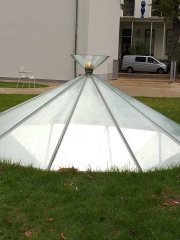
10. Rebecca Horn (1944 - 2024)
With an HPI of 60.85, Rebecca Horn is the 10th most famous German Sculptor. Her biography has been translated into 22 different languages.
Rebecca Horn (24 March 1944 – 6 September 2024) was a German visual artist best known for her installation art, film directing and body modifications such as Einhorn (Unicorn), a body-suit with a very large horn projecting vertically from the headpiece. While living in Paris and Berlin, she worked in film, sculpture and performance, directing the films Der Eintänzer (1978), La ferdinanda: Sonate für eine Medici-Villa (1982) and Buster's Bedroom (1990).
People
Pantheon has 19 people classified as German sculptors born between 1400 and 1953. Of these 19, 1 (5.26%) of them are still alive today. The most famous living German sculptors include Rosemarie Trockel. The most famous deceased German sculptors include Eva Hesse, Veit Stoss, and Tilman Riemenschneider.
Living German Sculptors
Go to all RankingsDeceased German Sculptors
Go to all RankingsEva Hesse
1936 - 1970
HPI: 68.11
Veit Stoss
1450 - 1533
HPI: 67.49
Tilman Riemenschneider
1460 - 1531
HPI: 66.73
Franz Xaver Messerschmidt
1736 - 1783
HPI: 64.77
Igor Mitoraj
1944 - 2014
HPI: 63.39
Johann Gottfried Schadow
1764 - 1850
HPI: 62.70
Adolf von Hildebrand
1847 - 1921
HPI: 62.24
Christian Daniel Rauch
1777 - 1857
HPI: 62.08
Adam Kraft
1450 - 1509
HPI: 60.91
Rebecca Horn
1944 - 2024
HPI: 60.85
Hans Multscher
1400 - 1467
HPI: 60.39
Clara Westhoff
1878 - 1954
HPI: 60.20
Overlapping Lives
Which Sculptors were alive at the same time? This visualization shows the lifespans of the 13 most globally memorable Sculptors since 1700.

